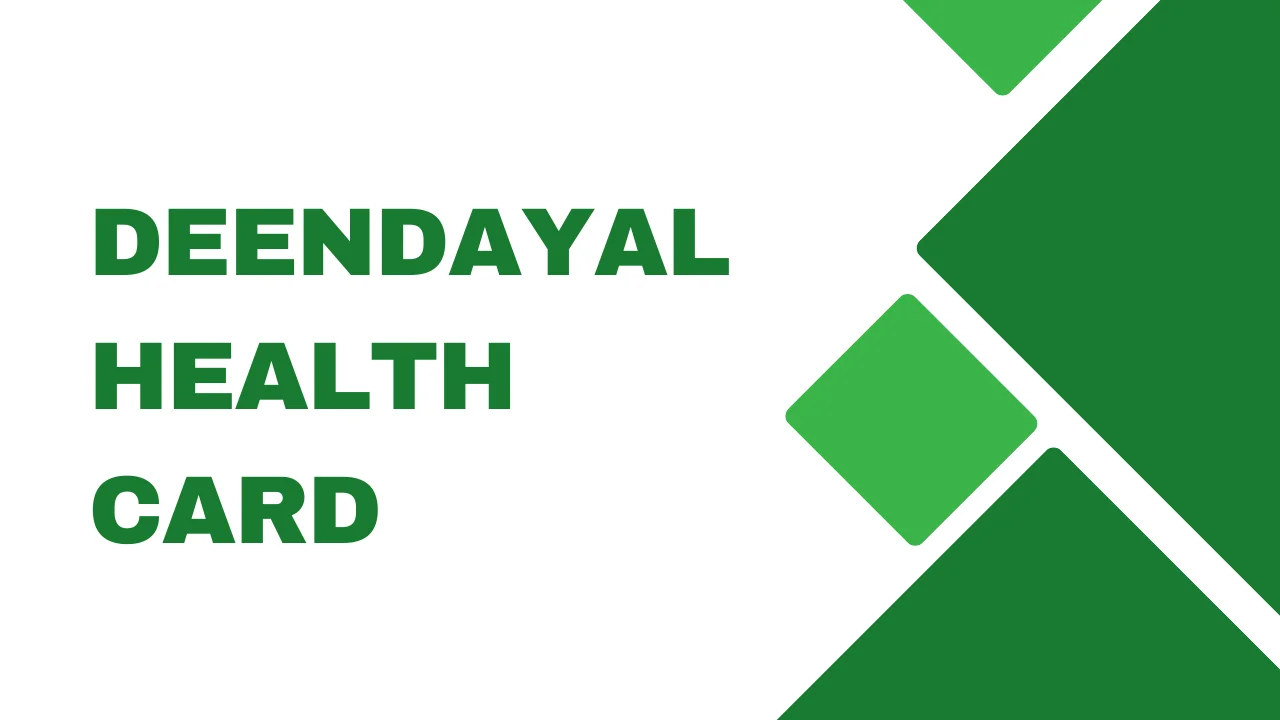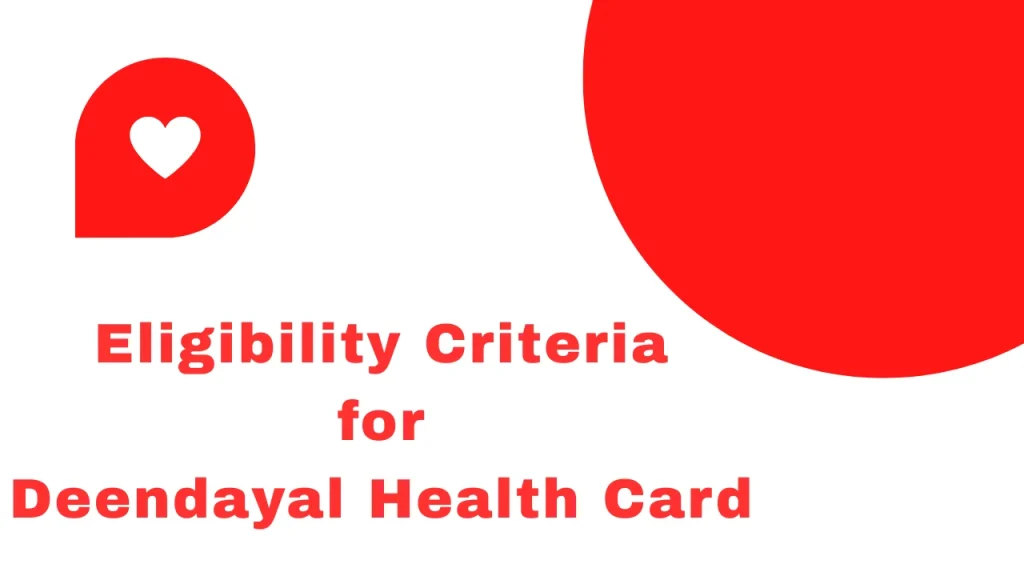Deendayal Health Card Access to Quality Healthcare Services

Healthcare is one of the most important needs in today’s world. The Deendayal Health Card is a government initiative designed to make medical services more accessible and affordable to citizens. Introduced under schemes like Deen Dayal Swasthya Seva Yojana in Goa and Pandit Deendayal Upadhyay State Employee Cashless Scheme in Uttar Pradesh, this program aims to ensure that no family faces financial struggles during health emergencies. Programs like up health family welfare play a vital role in implementing such policies successfully.
It allows families to receive cashless medical treatment at empanelled hospitals, covering a range of medical expenses. This article explores its features, eligibility, benefits, and how it supports healthcare accessibility in India.
What is Deendayal Health Card?
It is a government-issued health card that allows citizens to receive cashless medical treatment in empanelled hospitals. It was introduced under state-level schemes like the Deen Dayal Swasthya Seva Yojana in Goa and the Pandit Deendayal Upadhyay State Employee Cashless Chikitsa Yojana in Uttar Pradesh. The main goal of it is to provide affordable and accessible healthcare to residents, government employees, pensioners, and their families. Through this card, beneficiaries can get hospitalization, surgery, diagnostic, and emergency services without paying upfront at selected hospitals. It reduces the financial burden during medical emergencies and ensures that every citizen has access to quality healthcare without worrying about high medical costs.
Objectives Behind the Scheme
It serves several important objectives that support healthcare inclusion.
It is built on the foundation of social security and welfare for all families. The major goals include:
- Providing financial protection during medical emergencies.
- Offering cashless treatment in empanelled hospitals.
- Promoting quality healthcare access across urban and rural areas.
- Reducing the out-of-pocket expenses for medical care.
Through these objectives, the government strengthens healthcare accessibility, helping families avoid debt or hardship during illness.
Features
It offers several benefits depending on the state of implementation. In Goa, it operates under Deen Dayal Swasthya Seva Yojana (DDSSY), while in Uttar Pradesh it functions under Pandit Deendayal Upadhyay State Employee Cashless Chikitsa Yojana.
Here are the main features that make this scheme valuable:
| Feature | Description |
|---|---|
| Treatment Type | Cashless treatment in empanelled hospitals |
| Coverage Limit | ₹2.5 lakh (for 3-member family), ₹4 lakh (for larger families) |
| Eligibility | State residents or government employees (varies by region) |
| Hospital Type | Both government and private hospitals |
| Cost for Government Hospitals | No upper limit |
| Annual Renewal | Required to continue benefits |
| Dependents Covered | Spouse, children, and dependent parents |
These features make it one of the most practical and beneficial health programs for common citizens.
Eligibility Criteria for Deendayal Health Card

Eligibility for it depends on the state government’s specific guidelines. However, the general criteria are similar across regions:
- The applicant must be a resident of the state for at least five years.
- Government employees, pensioners, and their dependents are eligible.
- In some states, family members of private citizens may also qualify under general health schemes.
- The applicant should not already be covered by another government medical reimbursement program.
These eligibility conditions ensure that the card reaches those who truly need it the most.
Benefits
It offers a wide range of benefits designed to make healthcare accessible and stress-free.
Firstly, it provides cashless medical services, allowing patients to get treated without paying upfront. Secondly, it ensures quality healthcare by empanelling trusted hospitals that meet government standards.
Here are the major benefits explained:
- Cashless Treatment: Families can receive medical care without worrying about bills.
- Wide Coverage: Covers hospitalization, surgery, diagnostic tests, and pre/post-treatment care.
- Financial Safety: Protects families from sudden financial crises due to medical emergencies.
- Multiple Members Covered: Includes dependents such as spouse, children, and parents.
- Nationwide Recognition: In some states, the card can be used across multiple hospitals in India.
With these benefits, it acts as a shield against high medical costs while ensuring access to top-quality healthcare.
States Implementing the Deendayal Health Card Scheme
Different states in India have adopted variations of it scheme, each catering to the local population’s needs. Two of the most popular are:
1. Goa — Deen Dayal Swasthya Seva Yojana (DDSSY)
Launched by the Goa Government, this scheme covers residents who have lived in the state for at least five years.
Families receive cashless healthcare services up to ₹2.5 lakh or ₹4 lakh per year depending on family size.
2. Uttar Pradesh — State Employee Cashless Chikitsa Yojana
In Uttar Pradesh, this plan benefits state employees and pensioners. It provides cashless medical treatment in government and private hospitals.
The coverage is up to ₹5 lakh per family annually, and there is no limit in government hospitals.
These state models demonstrate the success of it in promoting accessible healthcare for all.
Hospital Network and Services
A major strength of the Deendayal Health Card scheme lies in its network of empanelled hospitals. These hospitals are carefully selected by the government for their infrastructure, medical staff, and service quality.
The network includes district hospitals, medical colleges, specialty centers, and private hospitals. Services covered under the scheme usually include:
- General surgeries and major operations
- Maternity care and newborn health services
- Diagnostic tests like X-rays, blood tests, and MRI
- Treatment for chronic diseases like diabetes, heart conditions, and cancer
- Emergency medical care and post-hospitalization support
The card ensures that patients get proper care at hospitals without financial barriers, keeping healthcare within everyone’s reach.
How to Apply
Applying for it is simple and can often be done online or through government offices. The steps usually include:
- Visit the official health department portal of your state.
- Fill in your personal and family details accurately.
- Upload necessary documents like Aadhaar card, proof of residence, and employee ID.
- Submit the form and note the application number.
- Once verified, it is issued digitally or physically.
For example, in Uttar Pradesh, applications can be made through the UP Health Department’s portal. The card is later linked to empanelled hospitals for cashless services.
Documents Required for Application
To successfully apply, applicants need to submit basic identification and residence proof. Common documents include:
| Document Type | Purpose |
|---|---|
| Aadhaar Card | Proof of identity |
| Residence Certificate | To confirm local eligibility |
| Employee or Pension ID | For government staff |
| Family Member Details | For dependent verification |
| Passport-size Photo | For official card printing |
These documents help the government ensure that only genuine beneficiaries receive it.
Renewal and Updates
It must be renewed annually to remain active. Renewal ensures that the family’s data, dependents, and hospital tie-ups stay updated.
To renew, cardholders can log in to their state health portal, review the information, and confirm details. In some cases, new family members or dependents can also be added during renewal.
This renewal process ensures smooth continuation of benefits without any service interruption.
Scheme’s Role in Promoting Public Health
It is not just an insurance card; it’s a symbol of health inclusion. It has encouraged citizens to seek timely treatment, leading to early diagnosis and reduced mortality rates.
Schemes like this align with national goals of universal health coverage, preventive care, and social welfare.
Educational initiatives such as family health services ppt often highlight the positive effects of these programs on community well-being.
Through financial assistance and accessibility, it promotes a culture of regular health check-ups, preventive healthcare, and awareness among citizens.
Comparison with Other Health Schemes
The Indian government runs several health insurance schemes. It differs from others like Ayushman Bharat in scope and coverage.
Here’s a quick comparison:
| Scheme | Coverage Limit | Target Group | Cashless Facility |
|---|---|---|---|
| Deendayal Health Card | ₹2.5–₹5 lakh | State employees, residents | Yes |
| Ayushman Bharat (PM-JAY) | ₹5 lakh | BPL families | Yes |
| ESIC Scheme | ₹3 lakh | Industrial workers | Yes |
While Ayushman Bharat focuses on economically weaker sections, it serves state-specific groups like employees and residents, expanding the reach of healthcare welfare.
The Vision for Deendayal Health Card in India
As healthcare continues to evolve, it is expected to expand its coverage, hospital network, and digital integration. States are working to connect the card with Aadhaar and online hospital systems for real-time billing.
In the future, the scheme may include telemedicine, preventive health check-ups, and online consultation features to make healthcare more efficient and citizen-friendly.
The goal remains the same — to build a healthier India where affordable healthcare is a reality for everyone.
Conclusion
The Deendayal Health Card is a visionary initiative that reflects India’s commitment to inclusive healthcare. By providing cashless treatment, wide hospital coverage, and financial security, it protects families from the heavy burden of medical expenses.
Whether in Goa or Uttar Pradesh, this scheme proves that healthcare is not just a privilege but a basic right for every citizen.
As awareness grows and more people enroll, it will continue to improve lives and ensure that quality healthcare reaches every home.






